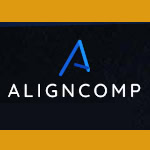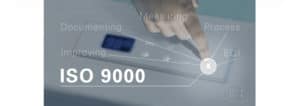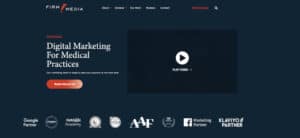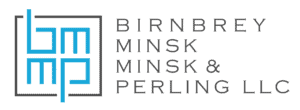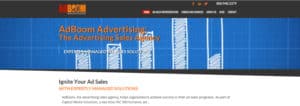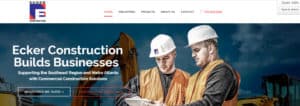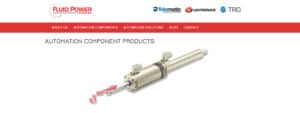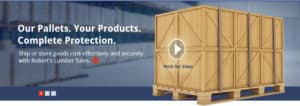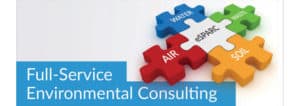
Over the past couple of years, I’ve reviewed 1000+ websites promoting independent web designers and small agencies.
Here are targeted changes you can make to get more business.

“Why would you review 1000 sites? Do you just have a lot of free time? Wouldn’t you be better off fixing the bathroom sink?”
No, I do not have a lot of free time. And I’m getting to the sink soon. Just waiting on a part.
As for “why,” clients and prospects occasionally ask me to refer them to a web designer. Some don’t have a provider. Others want someone new, or they need to supplement their in-house team.
I love making referrals, so reviewing web designer sites helps me see who’s working in the space. It also exposes me to the latest in design principles. That’s important background when I’m working on the messaging and strategy side.
Occasionally, I get feedback about the client’s decision process or I’ll see something that I think will help a designer win business. The following is my collected observations.
You’re smart and talented. You’ve got a great eye. You probably know the hex code to chartreuse.
So I’m not going to discuss color palettes, responsiveness, large and beautiful imagery, layout, performance, site security credentials, or other aspects of web design that you’re hopefully already implementing.
Let’s stick to conversion: taking prospective clients from where they land to where you want them.
Get design-friendly copy for your projects. Let me handle messaging strategy and writing for your clients.
The prospective clients who visit your website are busy. They value their time. Part of their decision process will be, “Can I easily evaluate and hire this provider?”
As web professionals, we apply this principle of ease to various elements of the site, from the user interface and CSS to the architecture and load times. The same should follow for learning about the services you offer, the projects you’ve completed, and the process for engaging your business.
Nearly every recommendation that follows will be some variation on this theme. Decisions that reduce work, answer questions, limit anxiety, and speed decision-making will generate more business for you.
I saw many websites where the designer included a portfolio, contact form, and “let’s work together” call to action, but nothing about the services they provide.
I have some guesses as to why. Maybe these designers:
All are completely understandable choices. We’re out here doing everything from filing tax paperwork and handling legal contracts to client management and marketing. It’s not easy to get it all right.
However, if at all possible, tell prospective clients which services you offer.
Whether you include a general “Services” page or a page for each solution you provide, it’ll be much easier for prospects to discover that you are open to their business and a fit for their needs.
When I’m hungry, I can deal with it in several ways. I can buy a gas station candy bar, go out for Chinese food, or stay home and make coq au vin (theoretically). Or, I can just go without food for a while, even though I need it.
Prospective clients also have a wide range of options. When you focus on conversion, you address the push and pull of competing solutions available to your prospects. These might include:
Remembering the principle of ease, you can differentiate your services from these alternatives. By educating your prospect, they’ll discover key decision criteria they may not have ever considered.
How you achieve this is up to you.
Maybe the prospect has been burned by an unreliable freelancer, so you’ve got a multitude of testimonials praising your professionalism.
Perhaps the prospect is tired of websites that rely on stock imagery, so your portfolio includes wow-inducing graphic illustrations.
If clients frequently compliment your accessibility, make that promise clear in copy: “With any ongoing maintenance contract, I respond to requests within 24 hours and begin work within three business days.”
In each case, you are showing that you understand the challenges with the other options they might consider — and how you are different.
When I go into the grocery (yeah, another food analogy), I know what I am buying, and the process is straightfoward. Items list their ingredients, amounts, and price. Checking out is as basic as unloading and paying at the register.
Freelance web designers can’t always provide such a simple and familiar experience. In many cases, they’re offering clients a carefully studied and individualized deliverable with professional support. That ain’t a loaf of bread.
Yet there are likely parts of your web design service that are standard from project to project. Show prospects your process, and they will:
Use large, clear thumbnail images for your entries. Two or three columns of projects seemed to be the right number. I found site elements or a full screenshot more helpful as a thumbnail than a close-up image, but you’ll have to judge that for yourself.
Display the project name without requiring hovering. This is particularly useful on mobile screens.
Provide filters based on how prospects make decisions. If you are promoting multiple design services and not just website design, you might have filters like “illustrations” and “email marketing.” Other options include filtering by client industry; site category (e.g. e-commerce, membership, aggregator); and technology (e.g. custom HTML, custom JS, WordPress).
Offer a summary of the client, industry, and technology or services used. Bullets or similar make it easier for prospects to scan this info and then decide whether to keep reading.
Before-and-after images provide a visual measure of what you achieved for a client. JavaScript sliders make this particularly effective. (Be sure to label the “before” so no one gets confused.)
Consider including an overview. Share what you did, why you did it, and why it’s an improvement. It’s even better if you have metrics to demonstrate the impact.
Link to the live site. If the site is no longer available or it’s been revamped, you might host the old version in some non-crawlable way. Alternatively, you can create high-resolution PDFs of the former site, but you might want to think about how mobile users will be able to review these documents.
We have already established that you’re fantastic. Hopefully, you’re proving this to prospects by collecting testimonials from past and current clients. In the future, I’ll probably write something about my process for this, but here are a few recommendations to get started:
We know that “The Easier It Is to Do, The More Likely It Will Be Done.” I believe there is a corollary: “The Harder It Is to Do, The Less Likely It Will Be Done.”
Let’s call it “The Principle of Challenge.” And let’s talk about why it works in your favor.
After having reviewed so many freelance web designer sites, I’ve found that very few are using the approach I’ve described. Some may face factors beyond their control. However, this stuff is also hard.
It’s challenging to define your services and show why you’re different.
It’s challenging to revamp your portfolio and collect testimonials.
That means it’s less likely that others will do it. Implement these steps, and you can stand out from a crowded field of providers and create more business for yourself.
Refer me to your clients, and I’ll collaborate with you on messaging strategy, site architecture, SEO, and copywriting:

“Working with Kevin and Augmental was a cathartic experience.”
“Together, we refined my company’s purpose, points of differentiation, and audience. I’ve been amazed at how well he captured what my company does.”
Xavier Chang
Principal
XC Consulting
XC Consulting works with business leaders to define and improve their company’s processes. The consultancy approached Augmental for help engaging and converting more of the prospective clients who visit its website.
To achieve this objective, Augmental:
Performed research and client interviews. This analysis allowed Augmental to identify areas for improving the site.
Worked in partnership with D.Hill Design to recommended changes to the site’s structure, user experience, and messaging. This included simplifying navigation to encourage conversion.
Used a problem-agitation-solution approach to rewrite the homepage. Augmental re-centered the content to make the website visitor the “hero” of the story.
Re-wrote the “Services” webpage and other site pages to clarify what clients can expect and to demonstrate the value of the consultancy’s offerings.
Wrote new case studies to add authority and trustworthiness to the consultancy.







